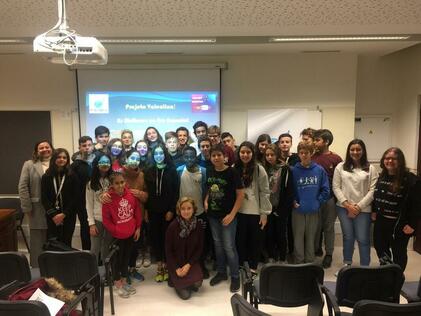
Em janeiro deste ano, a InnovaSpace teve a oportunidade de cativar a atenção de um grupo de estudantes, de 12-14 anos de idade, com apresentações sobre carreiras de cientistas espaciais.
Estudantes da Escola Rainha Dona Amélia, em Lisboa, reuniram-se no auditório junto com a Profa. Berta Ferreira, para aprender mais sobre o papel das mulheres na Era Espacial.
Com os olhos bem atentos, os jovens alunos sentaram-se para assistir à apresentação do Projeto Valentina, a qual começou com uma entusiasmada palestra da Dra. Michele Rosa, que falou sobre seu caminho profissional e científico até se tornar uma pesquisadora da área espacial, juntamente com o trabalho que ela hoje desempenha na posição de Coordenadora da InnovaSpace Portuguese Hub.
We are very pleased to announce that The Guardian, a prestigious British newspaper established in 1821, published an article this month (22nd Jan 2019) about InnovaSpace Founder and Director Thais Russomano and her pursuit of a career related to space and space travel. Thais is also Senior Lecturer and Deputy Course Director of the MSc in Space Physiology and Health, CHAPS, at King's College London.
The InnovaSpace outreach projects, such as Kids2Mars and Project Valentina, were also highlighted for their efforts to spark the interest of the young towards the STEM areas, and to follow careers linked to future space travel and colonies. Do have a read and tell us what you think! The Guardian Article Dr. Kushal MadanCardiac Rehabilitation Consultant, Dept. of Cardiology, Sir Ganga Ram Hospital New Delhi India 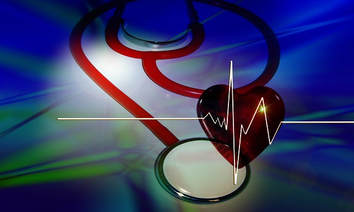 Here on Earth our arterial blood pressure values are set by the pumping action of our heart and by the resistance of our arteries to blood flow, known as peripheral resistance. Haemodynamics, or the flow of blood in our circulatory system can be summarised as:
Roberto FanganielloInnovaSpace Scientific & Strategic Consultant. 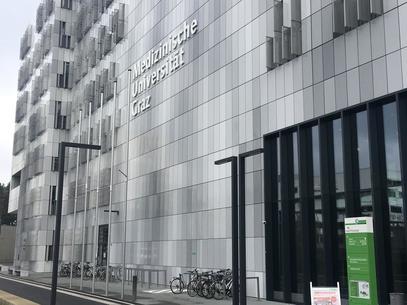 Medical University of Graz Medical University of Graz On November 21st and 22nd, 2018 I had the pleasure of visiting the laboratory of Prof. Nandu Goswami, at the Medical University of Graz, in Austria. Nandu is an Associate Professor at the university, interim head of the Division of Physiology and Head of the Gravitational Physiology and Medicine research unit. The main areas of study of his research group are cardiovascular physiology, cerebral auto-regulation and space/gravitational physiology, especially using Earth-based models of space flight. 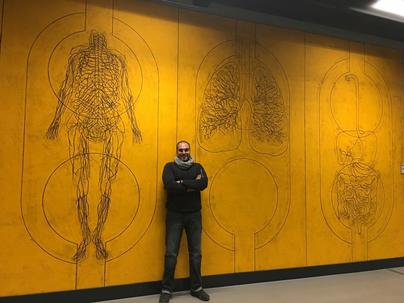 Thank you Nandu - I really enjoyed the visit! Thank you Nandu - I really enjoyed the visit! Cardiovascular alterations encountered during space missions, such as a reduction in central venous pressure, cardiac atrophy and decreased vascular responsiveness to standing are major concerns for astronauts during and after spaceflight. On Earth, the ageing process is also linked to physiological deconditioning of the cardiovascular system, which creates a parallel with the changes in human physiology secondary to weightlessness exposure. At the Gravitational Physiology and Medicine research unit, bed rest studies are used as a ground-based simulation of microgravity to further understand the effects of deconditioning, both for the elderly on Earth and astronauts in space. This is also an area of special interest for InnovaSpace Advisor Joan Vernikos, who conducted similar research at NASA for many years and has published scientific articles and books on the topic. InnovaSpace congratulates Nandu for his work, which is a very interesting area of research and can be seen as a good example of technological and knowledge transfer from space to Earth. Together with the InnovaSpace team, I hope we can one day collaborate with Prof. Goswami and his group in Graz. Roberto FanganielloInnovaSpace Scientific & Strategic Consultant. 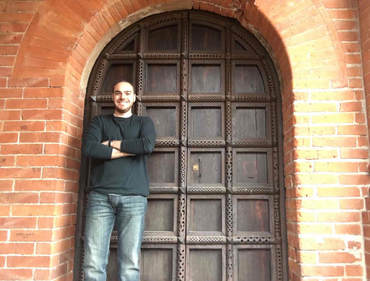 In this month of November I have joined the University of Eastern Piedmont (Università degli Studi del Piemonte Orientale Amedeo Avogadro - UPO) to lecture BSc students on basic and applied research in regenerative medicine and tissue regeneration, MSc candidates on innovations in medical biotechnologies, and PhD candidates on bone and cartilage tissue bioengineering. These courses are very much in line with my own three-pronged professional interests: basic and applied research, educational projects/programs, and technology transfer from academia to the market. With different degrees of depth, the main purpose of these courses is to provide students with a concrete understanding of complex biological systems, studied at the molecular, cellular and physiological levels (and especially related to humans), to equip them with practical knowledge of state-of-the-art biotechnological protocols used in the medical field, and to guide them on developing communications and networking skills in order to cooperate in multidisciplinary, multifaceted teams. The ultimate goal is to prepare them so they will be able to quickly fit into the working environment, at national, European and extra-European levels after graduation. A few members of the InnovaSpace team had the pleasure of meeting up in September this year in the beautiful city of Lisbon. Although primarily for work purposes linked to the launch of the Space Network (Rede Espaço) at the University of Lisbon, we must NEVER forget to mix a little pleasure wherever the opportunity presents itself - and as you will see from the photos, we had fun in Lisbon too!  Picturesque Lisbon, the capital city of Portugal, is one of the oldest cities in Europe, full of history, culture, and great food. The traditional dish bacalhau (codfish) is famous and has to be tried, while for lovers of something a little sweeter, the pastéis de Belém (a type of egg custard tart) are legendary and were originally made by monks of the Jerónimos Monastery using a secret recipe. As many of these mouth-watering tarts were eaten in our time in Lisbon, it seemed only fitting that we should also visit their place of invention! The former monastery dates back to 1495 and is well worth a visit, especially on a sunny day, and it was from there that Dr. Joan Vernikos, former NASA Director of Life Sciences recorded the few words below, encouraging young people to consider following a career in space research - there couldn't have been a more beautiful setting! Anthropology Of outer Space - On human/non-human relationships in the context of space science19/10/2018
One of the first ethnographies I read when beginning my Social Anthropology Master’s degree course was Beamtimes and Life Times: The World of High Energy Physicists (1988), by Sharon Traweek. She based this seminal account on her five years of fieldwork within the almost exclusively male domain of particle physicists, studying their culture, cosmology and worldview. One fascinating aspect that she underlines is the peculiar relationship that exists between these scientists and the accelerators and detectors they use to identify subatomic particles and understand their behaviour. The accelerators are some of the largest machines built and a great part of the scientist’s life is spent inside them: hence, not just a machine, but a place. Inside these accelerators are placed the detectors, each designed and crafted by a group of scientists to find answers to their specific research questions: not just a machine, but a conceptual and intellectual fingerprint. A new particle found may unveil a big mystery about the universe and catapult a scientist to academic stardom, however, it could also prove the whole hypothesis to have been built on a misguided assumption and thus, failure. As cosmologies and careers are at stake and the data collected may promote a paradigm shift, the detectors hold the hope of access to a hidden world. Therefore, they are more like portals than machines. 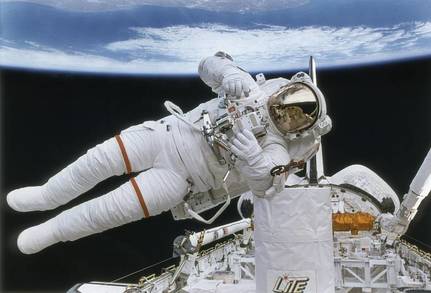 Image: NASA - Extravehicular Activity Image: NASA - Extravehicular Activity There is a same high dependency on machines in space science in order to access far away or invisible events and data, and this steered my attention toward human/non-human relationships in this context. This dichotomy itself is rather a cultural construct, and in some cultures this line is not clearly defined and is variable according to the cultural context, being more or less defined in certain places at certain times. In the context of space science, it becomes even more blurred. When applied to an astronaut, for instance, this concept tends not to make sense. In fact, an astronaut only becomes an astronaut in conjunction with the spacesuit/spacecraft, or they would be unable even to reach space to become a space-traveller. In this sense, you do not have simply the human (astronaut) and the non-human (spacesuit, spacecraft), but one single entity. An astronaut is inexorably a cyborg: a hybrid of organism and machine. Thais RussomanoInnovaSpace Founder, CEO & Scientific Director Set your imagination flowing and just consider the following scenario: "What's your preference? Cultural holidays? Something more adventurous?" asked the travel agent. The clients would think for a moment and then, slightly hesitantly, they would respond. "We like extreme sports, like mountain climbing, parachute jumping, or diving into the depths of the oceans." "Excellent - and so I suggest Mars! On the Red Planet there is an extinct volcano, Mount Olympus, the highest in the Solar System, three times taller than our own Everest!" recommended the agent. "And there the gravity is just one-third that of Earth, which reduces your body to just over 30% of what you weigh here. Therefore, it's even easier to climb mountains there." I added, as the Space Medic of the Intergalactic Travel Agency. This conversation and many others like it could be heard during a summer festival in London's Brockwell Park in late July, thanks to the creative thinking of Guerrilla Science, who wanted to present the idea of the possibility of experiencing holiday trips to different planets. Children and adults entered into the game, discussing possible destinations, the activities that could be offered on each planet, or on the moon or an asteroid, the distances to be travelled, and the costs of such a vacation to places far beyond the limits of the Earth. Actors played the role of the travel agents, while I introduced aspects of space tourism that can affect the health of intergalactic adventurers, such as exposure to radiation, the absence of gravity, and confinement within a spacecraft. Projects, such as this, still belong in the realms of science fiction for now, but they will begin to take shape in the not-so-distant future with the political, scientific and technological advances of Space Tourism. And in response to those of you who do not believe such a thing, Albert Einstein would say - "Something is only impossible until someone doubts it and ends up proving otherwise.” Gabriela Albandes de SouzaInnovaSpace Culture & Education Project Manager InnovaSpace took another step this week towards achieving its aim of bringing space closer to society, to reach out to underserved communities, and to make science and space more accessible and inclusive, when InnovaSpace founder Thais Russomano gave a virtual lecture about the participation of women in the space programme to an audience of 39 young ladies, aged between 10 and 12 years from two state-run schools in Gravataí, Brazil, as part of a project called ‘Elas no Lab’ (Girls in the Lab). 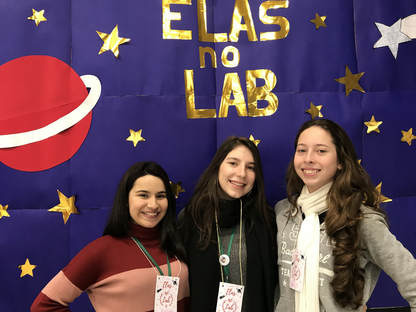 Project organisers Eduarda Rosa Ferreira, Indáia Pereira de Matos and Júlia Alvares Missel Project organisers Eduarda Rosa Ferreira, Indáia Pereira de Matos and Júlia Alvares Missel This project is the brainchild of three high school students from the Escola Sesi de Ensino Médio Albino Marques Gomes, a private high school in the same city in southern Brazil. Eduarda Rosa Ferreira, Indáia Pereira de Matos and Júlia Alvares Missel had the idea of creating workshops to raise the interest of young girls to pursue scientific careers, as part of a project led by their Physics teacher Cláudia Fraga Germano. Cláudia set her students the task of developing projects that would benefit state-run schools, which often do not receive sufficient funding to invest in the sciences, and lack proper laboratories and equipment. The activities also involved a rocket building workshop using recycled materials, a VR glasses experience that allowed the girls to virtually “travel around the universe”, the photo and video recording of the activities, and an exclusive Q & A session about space science with Thais Russomano at the end of her lecture. Feedback from the girls who attended the event was very positive, with many celebrating this unique and fun experience of learning about science. Another mission accomplished successfully due to a collaboration of working ideas and ideals in partnership! However, consider this just a first step – as InnovaSpace is proud to announce the launch of a new outreach project called Valentina – more details to be posted soon! Thais RussomanoInnovaSpace Founder, CEO & Scientific Director The ancient practice of yoga has its roots deep in the ancestral traditions of India. The word comes from the Sanskrit word yuj, which has countless meanings, such as controlling, uniting, concentrating, or integrating. Yoga is seen as a way of harmonising the body and mind, through meditation, breathing techniques and postural exercises. 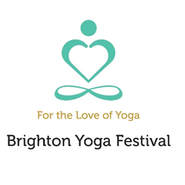 Despite its influence on various cultures over time, and it being practiced on a daily basis all over the world, I have to confess that I knew very little about this centuries-old practice, that is, until I was invited by Guerilla Science to take part in their Space Yoga class at the Brighton Yoga Festival, held on the weekend of 14th-15th July this year, at the Sussex County Cricket Ground in Brighton & Hove, neighbouring towns on the English south coast. Rather luckily, my invite did not involve me personally having to perform breathing exercises or adopt certain body positions, as my hosts may have been a little disappointed! It was, however, to talk about the changes undergone by astronauts when they spend time in microgravity, as yoga therapy has been contemplated and researched as a possible complementary activity that could benefit astronaut health and emotional wellbeing, as discussed in a 2012 article published by Joan Vernikos et al*. and a 2013 interview, hosted on the YouTube channel YogiViews.
|
Welcometo the InnovaSpace Knowledge Station Categories
All
|
UK Office: 88 Tideslea Path, London, SE280LZ
Privacy Policy I Terms & Conditions
© 2024 InnovaSpace, All Rights Reserved

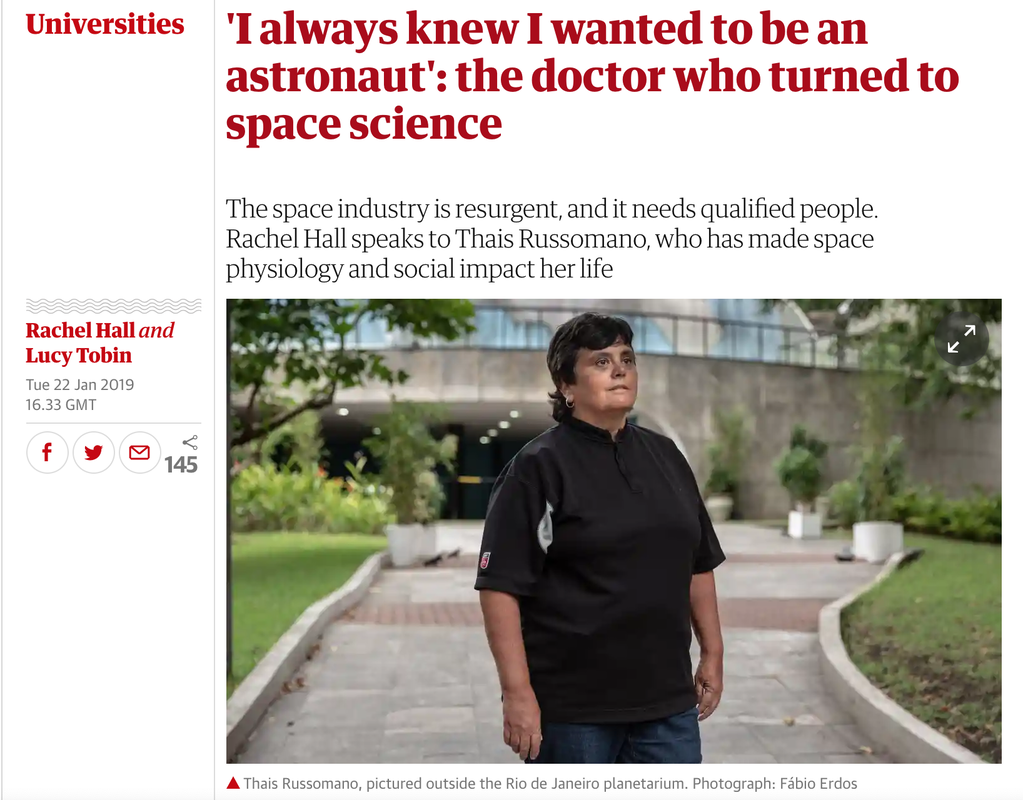


 RSS Feed
RSS Feed